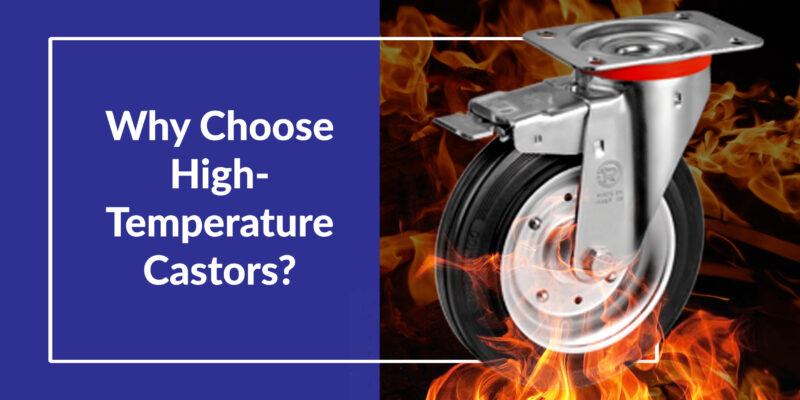High-temperature castors are one of the most versatile types of castors used in the modern work environment. Not every material can be used for making high-temperature castors because material properties change with change in the temperature. For example, ordinary rubber may seem strong in room temperature, but once the temperature goes beyond 150°c, it becomes soft and malleable. Certainly, this type of material behavior is not suitable for a high-temperature castor.
Now you may think whether there is any real benefit in choosing a high-temperature castor rather than an ordinary castor. High-temperature castors are costlier than ordinary castors so is the investment worthwhile? Let us answer your question on the importance of choosing high-temperature castors.
High temperatures cause change with material performance
When browsing through the different types of castors, you can see that most of them are intended to work below the temperatures of 70°c. But what happens when the temperature rises than that of the rated limit?
High temperatures will lead to the increased wear and tear of the castor wheel. When the wheels deteriorate at an uneven fashion, it will cause undulated motion of the equipment, causing it to tip side-to-side. This can cause critical hazards based on the equipment and the surroundings.
High-temperature castors are made from either specially developed polymers or cast iron. These are certified to be used well above the range of 70°c. Engineered resins like phenolic wheels can withstand temperatures around 250°c and a cast iron castor wheel can hold its own up to 315°c.
Lubrication burns up/Dries out
Since castor wheels are in a state of continuous motion, they are provided with lubrication to keep the moving parts and contacts running in top shape. Again, lubricants have a tolerance when it comes to temperature. With increase in temperature, their viscosity decreases. So in high temperature environments, they will fail to serve their purpose. Without proper lubrication, the castor will have a hard time keeping a smooth rolling action.
The bearings will fail, eventually
The bearings inside a castor takes quite a lot of beating when it comes to operating at temperatures beyond their suggested limit. Firstly, the reduced effectiveness of the bearings will lead to increased friction. Also, bearings normally use stainless steel bearings which expand at elevated temperatures, adding to more friction. As we are well aware, friction does not bode well with rollability and the whole setup will be increasingly hard to move from one place to another.
The solution to this problem comes in the form of high temperature castors that have ceramic ball bearings and a more temperature resistant lubricant. However, even this combination can’t handle temperatures that range from 300°c to 400°c. In that case. Bronze sleeves are used instead of ball bearing. The downside to this approach is that it reduces the rollability of the caster to around 50% of its optimum value.
Are they worth the extra bucks?
In a word, yes, they are worth the investment, provided that you are using them in the right environment. If you were to use ordinary castors for applications that involve environment like hot furnaces, then it fails within no time. High-temperature castors are made specifically to work in high temperatures. If you want to choose castor wheels from reputed companies, then head over to Al Humaidi Group – the leading Castor Wheel Suppliers to get access to thousands of products from trusted manufacturers all over the world.


One Comment
Leave a Comment
A WordPress Commenter
Hi, this is a comment.
To get started with moderating, editing, and deleting comments, please visit the Comments screen in the dashboard.
Commenter avatars come from Gravatar.